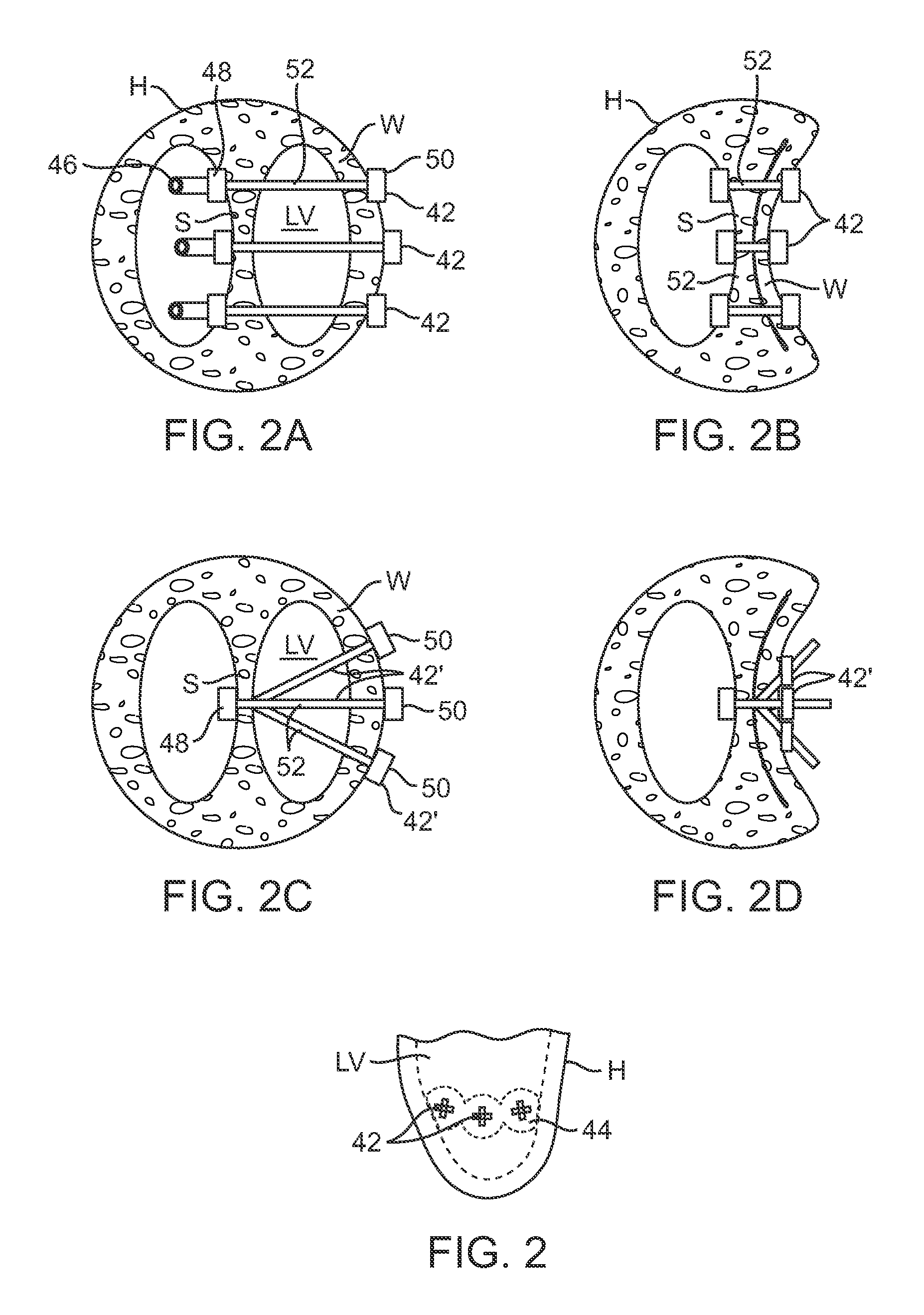Steerable lesion excluding heart implants for congestive heart failure
a heart implant and artery bypass technology, applied in the field of arteries excluding heart implants for congestive heart failure, can solve the problems of scar tissue progressively replacing more and more heart tissue, affecting the health of the heart muscle, and triggering congestive heart failure, so as to reduce the effect of the effective remaining ventricle chamber, and reducing the risk of heart failur
- Summary
- Abstract
- Description
- Claims
- Application Information
AI Technical Summary
Benefits of technology
Problems solved by technology
Method used
Image
Examples
Embodiment Construction
[0041]The present invention generally provides improved devices, systems, and methods for treatment of a heart. Embodiments of the invention may be particularly beneficial for treatment of congestive heart failure and other disease conditions of the heart. The invention may find uses as a prophylactic treatment, and / or may be included as at least a portion of a therapeutic intervention.
[0042]Myocardial infarction and the resultant scar formation is often the index event in the genesis of congestive heart failure. The presence of the scar may, if left untreated, lead to a compensatory neuro-hormonal response by the remaining, non-infarcted myocardium. The systems, methods, and devices described herein may be applied to inhibit, reverse, or avoid this response altogether, often halting a destructive sequence of events which could otherwise cause the eventual failure of the remaining functional heart muscle.
[0043]Embodiments of the present invention may build on known techniques for ex...
PUM
 Login to View More
Login to View More Abstract
Description
Claims
Application Information
 Login to View More
Login to View More - R&D
- Intellectual Property
- Life Sciences
- Materials
- Tech Scout
- Unparalleled Data Quality
- Higher Quality Content
- 60% Fewer Hallucinations
Browse by: Latest US Patents, China's latest patents, Technical Efficacy Thesaurus, Application Domain, Technology Topic, Popular Technical Reports.
© 2025 PatSnap. All rights reserved.Legal|Privacy policy|Modern Slavery Act Transparency Statement|Sitemap|About US| Contact US: help@patsnap.com



